1.
Introduction
It is of common knowledge, that the most effective method for constructing solutions of nonlinear partial differential equations (PDEs) of mathematical physics is the symmetry reduction method. The method can be both classical [1] and non-classical [2,3,4,5,6,7]. In these cases the construction of a proper ansatz (by which we mean a general form of an invariant solution) boils down to solving a quasilinear first-order differential equation, therefore an ansatz includes one arbitrary function and the initial equation reduces to a single differential equation with fewer independent variables, especially an ordinary differential equation (ODE). Reductions of differential equations to algebraic equations were considered in detail in [8] and [9].
Papers [10] and [11] presented a concept of conditional symmetry of evolution equations, which is a natural generalization of nonclassical symmetry. By using this method one can reduce nonlinear evolution equations with two independent variables to a system of ODEs. In [11] Zhdanov proved the theorem on the connection between the generalized conditional symmetry and reduction of evolutionary equations to a system of ODEs. It is worth pointing out that the number of differential equations in this system is equal to the number of unknown functions. The approach is used to construct exact solutions of nonlinear diffusion equations in [12]. The relationship between the generalized conditional symmetry of evolution equations and compatibility for overdetermined system of differential equations is studied in [13].
An approach on symmetry reduction of evolutionary equations is well developed. However, the problem of reducing of non-evolutionary equations is significantly less studied. The relation between the compatibility and reduction of partial differential equations in two independent and one dependent variables has been studied in [14]. Svirshchevskii [15] put forward the inverse symmetry reduction method for evolution equations of the form
where u=u(t,x) and K[u]:=K(t,x,u,∂u∂x,…,∂su∂xs). One can use this approach if K[u]∂u is the generalized infinitesimal symmetry of a linear homogeneous ODE. In [16] the generalization of Svirshhchevskii's method was proposed. It provides an explicit characterization of all nonlinear differential operators that leave a given subspace of functions invariant. It turns out that the inverse symmetry reduction method is also applicable to non-evolutionary differential equation [17,18,19]. We are looking for the ansatz reducing PDEs by solving ODEs that do not necessarily have to be linear.
More specifically, let u(k) denote the set of all kth order partial derivatives of u=u(t,x) with respect to (t,x). Suppose that a generalized vector field
is a generalized symmetry of an ordinary differential equation
where H is a smooth function of its arguments, and t plays the role of a parameter [17]. Then an ansatz reducing the equation
to a system of ODEs can be constructed via finding the general solution of the ODE (1.2) [17]. Integrating the reduced system, one obtain exact solutions of PDEs (1.3). Exact solutions of differential equations are useful for understanding physical phenomena described by these equations and testing approximate and numerical methods for solving them. The method can be applied to non-evolutionary equations and even to ODEs. Moreover, in the framework of our approach one can construct an ansatz that reduces non-evolutionary PDEs to a system of ODEs and also the number of equations is smaller than the number of unknown functions. This enabled us to find solutions depending on arbitrary functions, which will be shown in Section 3.1. It is worth pointing out that the suggested method is applicable in multi-dimensional case as well [17,20,21]. We see that the ODE (1.2) includes the parametric variable t, apart from dependent and independent variables u and x. This allowed us to construct integrable PDEs. For example the equation
admits the symmetry operator X=η∂u=(ut−uxxx+3uxxuux)∂u provided that a(t,x) satisfies the KdV equation
as was shown in [17]. Then it is clear that the method is related to the inverse scattering transformation method. We emphasize that η depends on ut and the condition of invariance of Eq (1.4) with respect to the group with generator X in classical sense leads to a determining equation which is the well-known integrable KdV equation. This approach belongs to a class of nonclassical symmetry methods in a sense that it produces results unobtainable within the classical methods. The idea is to use generalized symmetries of ODEs for constructing solutions of evolutionary equations. In this paper we consider a nonlinear evolutionary equation that describes transport phenomena in heterogeneous medium and apply a reduction method based on the symmetries of second-order nonlinear ODEs.
Extended symmetry analysis of porous medium equations with absorption and convection terms, including nonclassical symmetries, was carried out in papers [22,23,24]. Those equations included a factor dependent on a spatial variable x. We also studied diffusion-type equations for which the right-hand side involves a spatial variable and found solutions which are not invariant in classical sense by using the suggested method. We present the results obtained for the model medium with exponential and polynomial heterogeneity. Within the method applied, nonlinear transport equation is reduced to a system of two ODEs. After integrating (solving) the system of ODEs, we obtain exact solution of the initial equation. Right now main two differences from classical symmetry reduction should become apparent. With classical symmetry reduction there is only one reduced equation, not a system, and the solution from classical reduction will always be classically invariant. Since the method applied differs from the classical Lie method, it is not suitable for constructing algorithms for the generation of new solutions, or production of conservation laws. Its only advantage is the preservation of the reduction property. In addition, it doesn't ensure that none of the obtained solutions could also be found within the classical method. Therefore there is a very important question of distinguishing truly new solutions obtained within the method proposed. Many new local and nonlocal symmetries have been found for nonlocally related PDE systems [25]. Nonlocal symmetries alongside Bäcklund transformations helped finding solutions for the (2+1)-dimensional KdV–mKdV equation [26].
Based on the fact that a set of point and generalized symmetry operators (of the ODE) form a Lie algebra, we distinguish a class of diffusion equations whose solutions, obtained with the help of the aforementioned approach, cannot be obtained through the classical Lie method. Furthermore, it can be used to construct a large class of nonlinear evolution equation all of which are reduced to systems of ODEs by the same ansatz and possess solutions which are not invariant in the classical Lie sense. We emphasize that evolutionary equations are widely used and referenced in mathematical biology (see for instance [27] and references given there).
The organization of the article is as follows: We give the definition of generalized symmetry of an ODE and outline and explanation of the method in Section 2. In Section 3.1 we discuss applying of the method to PDEs. We find the classes of nonlinear evolutionary equations for which the method can be applied in the Section 3.2. In Section 3.3 we show the application of the method for finding solutions and obtain the solutions which cannot be constructed by the classical Lie method for the modified diffusion equations. The Theorem on a sufficient condition for the solution to be invariant one in classical sense is given too. In Section 4 we discuss the obtained results and provide some conclusions.
2.
Materials and methods
Consider the differential equation (1.2). Let us denote by L the set of all differential consequences of (1.2) with respect to t and x. Let
We treat (1.2) as it was a PDE which does not include the partial derivatives with respect to t.
Definition 1. We say that a generalized vector field
is a generalized infinitesimal symmetry of equation (1.2) if the condition
holds, where
is the standard pth prolongation (pth extension) of X and Dx=∂∂x+u1∂∂u+u1t∂∂ut+u2∂∂u1+… is the operator of total derivative with respect to x, u0=u, ui=∂iu∂xi, D0x=1, Dj+1x=Dx(Djx), i,j∈N.
For a more elaborate take on the basics of symmetry methods please refer to [28]. The invariance property (2.1) ensures a reduction of the equation
to a system of ordinary differential equations. Let
where F is a smooth function of (x,t,φ1,…,φp), be the general solution of Eq (1.2). Then the ansatz (2.3), where φ1(t),…,φp(t) are unknown functions of the variable t, reduces partial differential equation (2.2) to the system of k1 ordinary differential equations, where k1≤p [17]. For evolutionary equations k1=p, and for non-evolutionary equations, this number may be less than p. This property is illustrated by Eqs (3.9) and (3.13). The necessary computation was made in MapleTM with the addition of a software Jets for differential calculus on jet spaces and diffieties, which was created by H. Baran and M. Marvan and is distributed under the GNU General Public License. The tool and the user guide can be found at https://jets.math.slu.cz/.
3.
Results
3.1. On application of the generalized symmetry reduction method to differential equations with two independent variables
In this subsection we show how to apply the method to PDE's. At first we consider differential equations obtained with the help of symmetry operators of Eq (1.4). One can find the solution a=2x2 of Eq (1.5) when ∂a∂t=0 (the stationary Korteweg–de Vries equation). Then the equation
admits the three-dimensional Lie algebra with basic operators Q1=ut∂u, Q2=(uxxx−3uxxuux)∂u, Q3=u∂u in this case. Equation (3.1) is integrable by quadratures and thus we obtain the ansatz
where φ1(t), φ2(t) are unknown functions, which reduces nonlinear evolution equation
with λ=const, to the system of two ODEs
The solution of this system has the form
Substituting (3.4) into (3.2) one can obtain the solution of (3.3). Note that for a=wx, where w is a solution of the stationary Calogero–Bogoyavlenskii–Shiff equation
Eq (1.4) is also integrable by quadratures [29]. The reduction method can also be applied for reducing the Cauchy problem for Eq (3.3) with an initial condition u(0,x)=f(x) to the Cauchy problem for a system of ODEs.
Our next goal is to show that the method is applicable to non-evolutionary type PDEs. For this purpose we first consider the following differential equation:
It is invariant with respect to the two-parameter Lie group of point transformations with generators
From this it immediately follows that the Eq (3.5) is integrable by quadratures. To obtain non-evolutionary equations we look for symmetry operators of the form Y=η(t,x,u,ux,ut,uxt)∂u. We prove that the Eq (3.5) admits the generalized infinitesimal symmetries given by
as well. We emphasize that the coefficient η2 depends explicitly on the (parametric) variable t and the derivative utx. This enabled us to find non-evolutionary nonlinear differential equations that can be reduced to a system of ODEs by appropriate ansatz. One can use linear combinations or commutators of the operators Y1, Y2 and Y3. We consider the symmetry operator Y2−Y3. Then the corresponding non-evolutionary differential equation takes the form
By using symmetry properties we integrate Eq (3.5) and thus obtain the ansatz
where ω=x3/2, k(t)=√23√3(t+1), and φ1(t) and φ2(t) are unknown functions, which reduces (3.6) to the system of ODEs
The application of the same method to non-evolutionary nonlinear hyperbolic equation
with F being an arbitrary function of ux1−u, yields the solution
parameterized by an arbitrary function φ1(x2). This solution is obtained by using the generalized infinitesimal symmetries Q1=ux1x2∂u and Q2=ux1F(ux1−u)∂u of the ODE ux1x1−ux1=0.
It is clear that an ODE generating an ansatz may be nonlinear. For example, the equation
admits the generalized infinitesimal symmetries Q1=ux1x2u2x1∂u and Q2=F(u+lnux1)∂u, where F is an arbitrary function of u+lnux1. Thus, it admits the generalized infinitesimal symmetry Q=Q1−Q2 as well. The general solution of (3.11) gives the ansatz
where Φ1(x2) and Φ2(x2) are arbitrary smooth functions, which reduces the nonlinear PDE
to the single ODE
From this we obtain the family of solutions of (3.13)
which is parameterized by the arbitrary smooth function Φ2(x2). Therefore, the method allows us to construct solutions, which contain arbitrary functions. We recall that second order in time nonlinear partial differential equations, which have only one higher symmetry and have a solution depending on one arbitrary function were called partially integrable equations in [30].
Note that setting F(u+lnux1)=e−2(u+lnux1) in (3.13), we obtain the equation ux1x2=e−2u which is transformed to the classical Liouville equation vxt=ev by means of the change of variables v=−2u, x=−2x1, t=x2.
It is obvious that Eq (3.11) is invariant with respect to the Lie group of translations in t, which is generated by the vector field Q3=ut∂u. Therefore, the generalized vector field Q3+Q1−Q2 is a generalized infinitesimal symmetry of Eq (3.11). Then the ansatz
reduces the partial differential equation with three independent variables of evolution type
to the system of two partial differential equations with two independent variables
At the same time we do not obtain such reduction for the non-evolutionary equation
Note that the generalized vector field Q3=utt∂u is not an infinitesimal symmetry of Eq (3.11). In [16], it was shown that the reduction method can be applied to partial differential equations of the form utt=Q[u] or the more general form T[u]=Q[u], where T is a linear ordinary differential operator in t. Each of ansatzes used in [16] in this case to reduce partial differential equations is a solution of a linear ordinary differential equation whose coefficients do not depend on t and, therefore, the generalized vector fields utt∂u and T[u]∂u are the generalized symmetries of this equation. These facts substantiate the reduction of considered partial differential equations utt=Q[u] and T[u]=Q[u].
The above examples demonstrate rather strikingly that the method can be applied to non-evolutionary type PDE. The main idea of applying the method to evolutionary equations can be illustrated by the example of the Korteweg–de Vries equation. One can verify that the equation
is invariant with respect to the generalized vector field X=(uxxx+uux)∂u. Note that we can obtain any desired coefficients for the terms of Eq (1.5) by rescaling dependent variable and independent variables t and x. We have proved that the Eq (3.19) is invariant with respect to a two-parameter group of contact transformations. A basis of the corresponding Lie algebra consists of the generalized vector fields
where h1 and h2 are arbitrary smooth functions. The advantage of using the approach lies in the fact that a linear combination α1X+α2Q1+α3Q2 with arbitrary real constants α1, α2 and α3 is also a symmetry operator of (3.19) and, therefore, the method can be applied to the nonlinear differential equation
Then the ansatz
generated by (3.19) reduces the PDE (3.22) to the system of two ODEs
Equation (3.22) in the general form is invariant with respect to the two-dimensional Lie algebra ⟨∂t,∂x⟩. Since the derivatives ∂u∂φ1 and ∂u∂φ2 are linearly independent, one can easily see that among solutions of (3.22) constructed with the ansatz (3.23), there are those that are invariant with respect to no one-parameter Lie group with generator in ⟨∂t,∂x⟩. Hence we conclude that the method enables us to construct solutions to equations from class (3.22) that are not invariant in the classical Lie sense.
3.2. The classes of evolutionary equations for which the method can be applied
Next we consider a nonlinear evolutionary equation which can be used for describing diffusion processes in heterogeneous medium and for which the method can be applied. We are looking for the second-order ODEs of the form
(which belong to the class (1.2)) admitting a generalized symmetry with a generator of the form X=(H(x)u)xx∂u corresponding to the right hand side of our diffusion equation. Note that the Eq (3.25) is invariant with respect to the translation group t′=t+a, where a is a group parameter and therefore it admits the symmetry operator X1=ut∂u. From this it follows that the method is applicable to any equation from the class k1ut+k2(H(x)u)xx=0, where k1,k2 are arbitrary constants. We assume H and U are some sufficiently smooth functions and H is nonzero. Function U should satisfy the determining equation
as stated in Definition 1, for a given function H, with L being the set of all differential consequences of Eq (3.25) with respect to the variable x. For the sake of being able to split the equation above into an overdetermined system of differential equations, we restrict our search to a function U=∑i,j∈ZAij(x)uiujx, that is a power series in both u and ux. We focus not a complete classification but rather particular H and U for which this method may produce nonclassical solutions. Due to a great number of determining equations and cases to consider we will move past the explanation of calculations and present some of the results in the following proposition.
Proposition 1. An equation uxx=U(x,u,ux) admits the LBS operatorX=(H(x)u)xx∂uif H(x) and U have the form
a) H(x)=eβx, U=3u2xu−3βux+β2u,
b) H(x)=(x+γ)α, U=3u2xu+3−3αx+γux+(α−2)(α−1)(x+γ)2u,
c) H(x)=(x+γ)α, U=3u2xu+1−3αx+γux+(α−2)α(x+γ)2u,
d) H(x)=(x+γ)−2, U=3u2xu+7x+γux+8(x+γ)2u,
e) H(x)=(x+γ)−2, U=3u2xu+10x+γux+15(x+γ)2u.
Terms α, β, γ are all constants.
It must be noted that because of the said restrictions this is not a complete classification. Solutions of ODEs can be used as ansatzes which produce a reduction of the equation
to a system of two ODEs. Equation (3.26) can be written in the form
where D(x,u)=−H(x)u2, P(x,u)=−H′(x)u2, Q(x,u)=H″(x)u. Assumption of constancy D is not always justified – often the diffusion coefficient depends on the concentration of the diffusant, concentration gradient, spatial coordinate and time of the diffusion experiment (and sometimes - from all these parameters together). In [31] the reaction-diffusion equation of the typical form
is considered. u=u(x,t) is a state variable and describes density/concentration of a substance, a population at point x: x∈Ω⊂Rn (Ω is an open set). Δ denotes the Laplace operator. The second term, f(u) is a smooth function, and describes processes with really "change" the present u, i.e., something happens to it (birth, death, chemical reaction), not just diffuse in the space. It is also possible, that the reaction term depends not only on u, but also on the first derivative of u, i.e., ∇u and/or explicitly on x. Instead of a scalar equation, one can also introduce systems of reaction diffusion equations, which are of the form
where u(x,t)∈Rm [31]. The system of equations
is used in [32] to describe the densities of two biological species, considering nonlinear movements of the individuals of populations. Here K(x) is environmental potential describing the heterogeneity of environment. Equations (3.26) and (3.27) belong to the class of Eq (3.29) and the method is applicable to any equation from this class or (3.30). Note that Eq (3.26) can be used for describing fast diffusion in heterogeneous medium if H(x)≠const and homogeneous medium if H(x)=const. We use the fact that the equation
also allows reduction with the same ansatz, for η such that η∂u is the symmetry of the ODE. Note that if we take H=−1 and η=0 then we get the well-known equation describing nonlinear diffusion processes, which possesses an infinite generalized symmetry. We consider separate cases from Proposition 1 depending on the type of heterogeneity of the medium H(x) and the ODE (which is not unique for the choice of H), calculate the full contact symmetry of the ODE and obtain the reduced equations. From now on Ai are arbitrary smooth functions on their two arguments. We put γ=0 in these cases.
(i) When H(x)=eβx and
the most general formula for η(x,u,ux) is η=∑2i=1e−iβxu3Ai(2eβxu3(u−uxβ),e2βxu3(2uxβ−u)). From what already has been shown it follows that the ansatz
which is general solution of (3.31), reduces the equation
to the system of ODEs
(ii) When H(x)=xα,α≠0, and uxx=3u2xu+3−3αxux+(α−2)(α−1)x2u we obtain, in a similar way, the equation
and the ansatz
Substituting (3.36) into (3.37) yields the reduced system
Analysis similar to that in the first two cases gives the following results:
(iii) When H(x)=xα,α≠−2 and uxx=3u2xu+1−3αxux+(α−2)αx2u, the equation
is reduced by the ansatz
to the system
(iv) When H(x)=x−2 and uxx=3u2xu+7xux+8x2u, the equation
is reduced by the ansatz
to the system
(v) When H(x)=x−2 and uxx=3u2xu+10xux+15x2u, the equation
is reduced by the ansatz
to the system
We calculated all η(x,u,ux) for which the method can be applied. In general, η(x,u,ux) is a nonlinear function on its arguments. Note that the nonlinear terms are essential in realistic models [33]. In special cases we can obtain from η(x,u,ux) the terms describing external forces, absorbent rate, sources or sinks and convection (advection) processes. We show that the well known nonlinearity λulnu [34] can be obtained in the framework of the approach by using the stationary solution of equation
Indeed, it is obvious that the vector field Q=(uxu)x∂u is the generalized symmetry of ordinary differential equation
The solution of (3.39) satisfies condition ut=0 and is the stationary solution of (3.38) The contact symmetry of (3.39) is given by vector field Q1=η1∂u=(xuF1(ω1,ω2)+uF2(ω1,ω2))∂u, where F1, F2 are arbitrary smooth functions on two variables ω1=uxu, ω2=lnu−xuxu. Imposing conditions ∂η1∂x=0 and ∂η1∂ux=0 yields F1=λω1, F2=λω2, where λ is an arbitrary real constant. Then we have the diffusion equation
This equation possessing point nonclassical symmetry has been obtained in [34]. If F1=λω1, F2=λω2+h(ω1), where h is a smooth function then we obtain the generalization of (3.40)
The ansatz
generated by the stationary solution of (3.38) reduces Eq (3.41) to system of two ODEs
Applying the method to the two-component diffusive system we have
Next consider the equation
when H(x)=1. It is obvious that the vector field Q=(1u)xx∂u is the generalized symmetry of ordinary differential equation
This equation is also invariant with respect to the Lie group of point symmetry given by vector field Q2=(ku2+k1u+ux(k2+k3u))∂u, where k,k1,k2,k3 are real constants. From the stationary solution of (3.43) we obtain the ansatz
which reduces nonlinear diffusion equation
to the system of ordinary differential equations
In the framework of this approach one can obtain the two-component diffusive system
where k4,k5,k6,k7,k8,k9 are real constants. Note that the method based on stationary solutions, in general, is not applicable to the non-evolutionary equations. Although the approach described here is purely mathematical, however, it is sufficiently general to be applied to differential equations used in various fields of science including biological. For example, the diffusion coefficients which are used in [35] and are proportional to Cβzm, where the values of β, m may be positive, negative or zero, z is the scaled height and C is the scaled concentration of the diffusing material, closely correlate with results described in (ii), (iii), (iv) and (v). There is a plausible physical justification for an inverse relation between the diffusion coefficient and the concentration C [35]. The relevant nonlinear differential equation is demonstrated as a model of turbulent dispersion in the atmosphere in [35], thermal wave propagation in plasma physics and fluid flow in porous media [36]. The approach can be also applied to the systems of Lotka–Volterra type which are used in mathematical biology [27] and equations describing fast diffusion processes. Here we use the method which rather belong to nonclassical symmetry approach since it provides solutions that cannot be obtained by using the classical Lie group method. In general Ai may depend on parametric variable t and the corresponding diffusion equation may be used for simulation of nonstationary media. It is obvious that the method is applicable to the ODE (Hu)xx+η(x,u,ux)=0. The corresponding ansatz reduces an ODE to a system of algebraic (not differential) equations in this case. For example ansatz (3.32) reduces the ODE
to the system of two algebraic equations
One can easily choose such A1, A2 that the system (3.47) will not have solutions. In general, the method ensures the reduction of ODEs to a system of algebraic equations but does not guarantee the existence of even one solution of reduced system and consequently solution of overdetermined system given by the ODE under study and the ODE possessing the corresponding generalized symmetry. It means that the ordinary differential equation is reduced to the system of algebraic equations but the appropriate overdetermined system of ordinary differential equations is not compatible.
3.3. How to construct solutions using a 2nd order ODE
In this subsection we show the application of the method for finding solutions and obtain the solutions which cannot be constructed by the classical Lie method for the modified diffusion equations. We modify our original diffusion equation by some selected characteristics of point symmetries representing some physical properties of nonlinearity on heterogeneity. Let's start with the equation
The ansatz is
We will consider equation
which is obtained from (3.33) by letting
where I1=2eβxu3(u−uxβ), I2=e2βxu3(2uxβ−u). By choosing only those five of all eight characteristics of the symmetry operators it is easy to solve the reduced equations. Note, that the Eq (3.48) can be linearized using a point change of variables, but we don't do such thing, because it would change also the term (eβxu)xx. The property of reduction for Eq (3.50) is not limited to linear ODEs, it is also valid for nonlinear ODEs. For example, Korteweg–de Vries equation admits reduction with an ansatz obtained from a solution to an ODE which is an arbitrary linear combination of higher-order symmetries. One can also use any linear combination of higher-order symmetries of KdV to produce the ansatz. After substituting the ansatz (3.49) into (3.50) we obtain reduced equations:
Now, the evolutionary equation (3.50) admits the following symmetry operators:
Depending on the choice of ai the reduced system is integrable and we can construct the solutions to the modified evolutionary equation.
For a2≠0, γ=±√(a2β+2a1)2−4β2a3, γ≠0, δ=a1a5−a4β+a2a5βa21+a1a2β−a3β2, a21+a1a2β−a3β2≠0 the reduced system (3.51) and (3.52) has the following solution:
Substituting φ1, φ2 into (3.49) gives the solution of (3.50) with the restrictions above.
The construction of solutions in the rest of the cases runs as before.
The imposition of condition a2=0 on (3.50) slightly simplifies the reduced system as well as its solution, which then is:
γ now representing ±2√a21−β2a3≠0. Equating in (3.50) a nonzero term a3 to (a22+a1β)2 leads to quite a different solution:
Similarly, putting in (3.50) a2=0 and a3=a21β2 results in solutions:
Lastly, for a1=0 and a2+βa3=0 in (3.50):
When ∃i∈{4,5}:ai≠0 and ∃j∈{1,2,3,4,5},j≠i:aj≠0 the maximal Lie invariance algebra of the Eq (3.50) is one-dimensional and is spanned by ∂t. The presented solutions are clearly not invariant under translations of the variable t. When exactly one of the constants a4, a5 is nonzero and a1=a2=a3=0 or a3 is nonzero and both a4 and a5 are zeros, the maximal Lie invariance algebra of the Eq (3.50) is two-dimensional, and invariance under one-parameter symmetry group with the generator α1Y1+α2Y2 must be verified from the definition, that is solution u=u(x,t) is invariant when there exist real numbers α1,α2, at least one nonzero, that (α1Y1+α2Y2)(u−u(x,t))|u=u(x,t)=0. Otherwise, the solution is not invariant. Instead of checking the invariance by the definition, we will compare them with the invariant solutions in the class (3.49). Functions φi for invariant solutions are as follows.
For a3≠0, a4=a5=0
for a4≠0, a1=a2=a3=a5=0
and for a5≠0, a1=a2=a3=a4=0
where c1, c2, α1, α2 are all constants. By plain comparison, in those 3 cases, none of the five solutions in general form obtained from the reduced equations is invariant under α1Y1+α2Y2 (Y2 depending on the choice of nonzero ai).
One does not always have to solve the reduced equations to determine if the solution is or isn't invariant. Let's for example take equation
which is obtained from (3.33) by letting
It admits the same ansatz as in the previous example,
and is reduced to a system
The Eq (3.53) possesses three symmetry operators when a6=a7=0 and only one symmetry operator (∂t) when both a6≠0 and a7≠0. Let's consider the case a6=0, a7≠0 with two-dimensional Lie algebra. Here Q1=∂t,Q2=t∂t+12u∂u is the basis of the algebra for Eq (3.53) (with a6=0). Invariance criterion in terms of functions φi after splitting with respect to the powers of eβx is
Reduced equations do have an explicit solution but it is invariant, because φ1=0. They also have an implicit solution. At this point all we need is to solve the reduced equations for the derivatives of φi and substitute those into the system above. The result is another system,
The two equations are very similar. After dividing the ith equation by βφ1φi and subtracting one from another we have
meaning
so the Eq (3.54), where both φi are nonzero solutions of the reduced equations, wouldn't be an invariant solution.
Now we will find the solution to the system of the reduced equation. But firstly, we will show how to find a symmetry of the reduced equations having the symmetry of the PDE. We consider a case, when the symmetry operator Q of the PDE is admitted also by the ODE (3.48) (we treat the ODE as a PDE that does not include the derivative ut) and condition
holds, where Q[1] is the first prolongation of operator Q, f1(I1,I2), f2(I1,I2) are arbitrary smooth functions,
are the first integrals of Eq (3.48). For an independent variable we impose the condition
where m(t) is arbitrary smooth function. One can construct the symmetry operator for reduced system in the form ˜Q=m(t)∂t+f1(φ1,φ2)∂φ1+f2(φ1,φ2)∂φ2 if the conditions (3.55) and (3.56) are fulfilled. Obviously, we obtain a nontrivial symmetry for a system of reduced equations, if f1, f2 and m are not identically zeros. It's pretty obvious that Q1 i Q2 satisfy all the conditions, namely for Q1 we have f1=0, f2=0 and m=1, and for Q2 we have f1=−I1, f2=−I2 and m=t. Thus we conclude that the ODE system
is invariant with respect to 2-parameter Lie group of point transformations whose Lie algebra is given by basic elements
which are obtained from Q1, Q2. It means that the system is solvable in quadratures. A point transformations
maps the symmetry operators X1,X2 into
The transformed system can be simplified into
We can easily solve for Z,
which in initial coordinates is an algebraic equation
Solution
is trickier to utilize once going back to the original coordinates. If we were to use WT=2eZβ2T2, this equation would imply a differential equation
that can be alternatively written as
The only invariant solution of the form u(x,t)=±eβx√φ1eβx+φ2 is the one where φi=ciα1+α2t, ci,αj=const, i,j=1,2. In that case φ1φ2=c1c2=const, and it is visible that such φi do not satisfy Eqs (3.57) to (3.60).
If we take a8=−β, then
but most importantly the integral in (3.58) can be easily calculated,
From this we obtain
Taking the equations above into account, we see that
Because W=t, φ2=eZ, φ1=Tφ2, the solution of the reduced system in original coordinates is
The solutions we constructed have the property that corresponding solutions φ1, φ2 are not (identically) zero. At least we can say that there exist values of a8 such that the proposed method allows us to construct non-invariant solutions, i.e., solutions that cannot be obtained by the classical Lie method. In conclusion, we have found φi's for which the solution u(x,t)=u(x,φ1(t),φ2(t)) is not invariant under the point symmetries of the evolution equation. Consider the equation
A basis of its Lie algebra A3 of point symmetries consists of the vector fields
The solution to the reduced equations
is
We call ansatz (3.54) together with solutions (3.64) a particular solution of (3.61).
Theorem 1. Any particular solution of (3.61) given by (3.54) and (3.64) is invariant with respect to a one-parameter Lie invariance group of (3.61).
Proof of Theorem 1. Note that in the general case, the derivatives ∂u∂φ1 and ∂u∂φ2 are linearly independent. Otherwise, for some β1, β2, equation β1∂u∂φ1+β2∂u∂φ2=0 would be true, and therefore u would be dependent on only one constant,
which is impossible, because it is the general solution of second-order ODE (3.48) Moreover the derivatives ∂u∂c1 and ∂u∂c2 are linearly independent since the pair (φ1, φ2) is the general solution of (3.63) and has the form (3.64).
The action of the operator X=ξj(x,u)∂∂xj+η(x,u)∂u, is the following
where x=(x1,…,xn) for some integer n, h(x) is a differentiable function. Then we show that
where W2=span{∂u∂c1,∂u∂c2} and Q∈A3. To prove this, it is enough to show this property for each of the basis elements X1, X2, X3.
By direct computation we show that for X1=∂t
for X2=2t∂t+u∂u
and for X3=2∂x+βu∂u
where f(x,t) is the solution of (3.61) given by (3.54) and (3.64).
From the fact that any three vectors in two-dimensional vector space are linearly dependent, it follows that for any special solution (3.54) and (3.64) there can be selected α1, α2, α3 such that X(f(x,t)−u))|u=f(x,t)=0, where X=α1X1+α2X2+α3X3 and not all αi are equal to zero.
We conclude that every solution given by (3.54) and (3.64) can be found using a classical method of invariant solutions with respect to a one-parameter Lie group α1X1+α2X2+α3X3.
This theorem is only sufficient but not necessary condition for a solution to be invariant in a classical sense. In fact, let us consider the two-dimensional abelian subalgebra of Lie algebra A3, with basis elements Q1, Q2, where
(these operators clearly commute, [Q1,Q2]=0). Because
and
the solution u=f(x,t) is invariant with respect to a linear combination Q1−βQ2. On the other hand, it is obvious that this solution cannot be obtained with a classical method using just any two-dimensional subalgebra, because not every two-dimensional algebra has the aforementioned properties, for example {X1,X3}. No nonzero linear combination of X1 and X3 leaves the solution invariant.
4.
Discussion
We have constructed solutions of nonlinear evolution equations which can be used for describing the diffusion processes in heterogeneous medium by using the method based on the generalized symmetry of ODEs [17]. We show that the method gives us the possibility to obtain solutions which are not invariant ones in the classical Lie sense. We use the generalized symmetry of the second-order ODEs. The corresponding ansatzes reduce nonlinear diffusion equations to systems of two ODEs. One can obtain the solutions which can not be constructed by the classical Lie method in the cases when the dimension of the invariance Lie algebra is equal to 1 or 2. When the Lie algebra of the Lie invariance group of studied diffusion equation is three-dimensional then the solutions obtained by using our method could also be obtained via the classical Lie symmetry method as follows from Theorem 1. We have found wide classes of diffusion-type equations (and exact solutions) for which this method can be used. It is also shown that the method is applicable to non-evolutionary PDEs and enables us to construct solution depending on an arbitrary function for nonlinear hyperbolic (wave-type) equation. In fact, we show that the approach extends the applicability of the symmetry method for constructing exact solutions to PDEs. Exact solutions of differential equations are useful for understanding physical phenomena described by these equations and testing approximate and numerical methods for solving them.
Acknowledgments
This study received no funding.
Conflict of interest
The authors declare there is no conflict of interest.











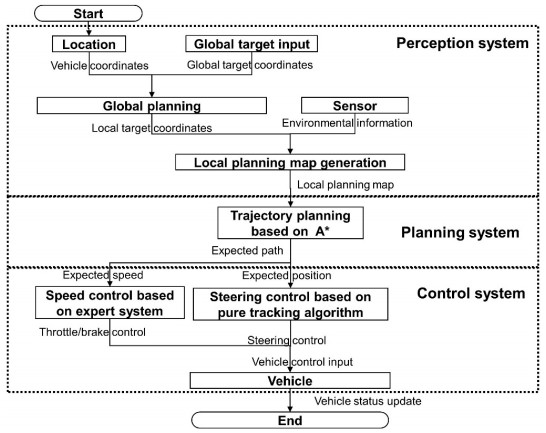

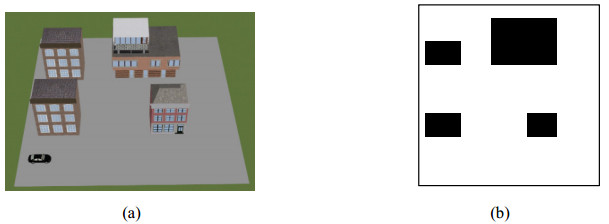

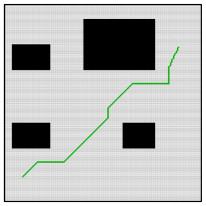

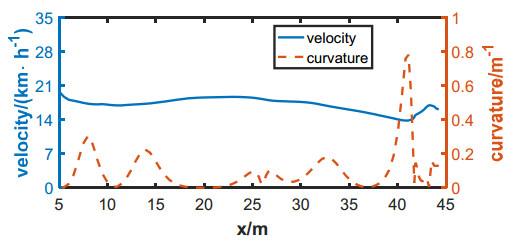
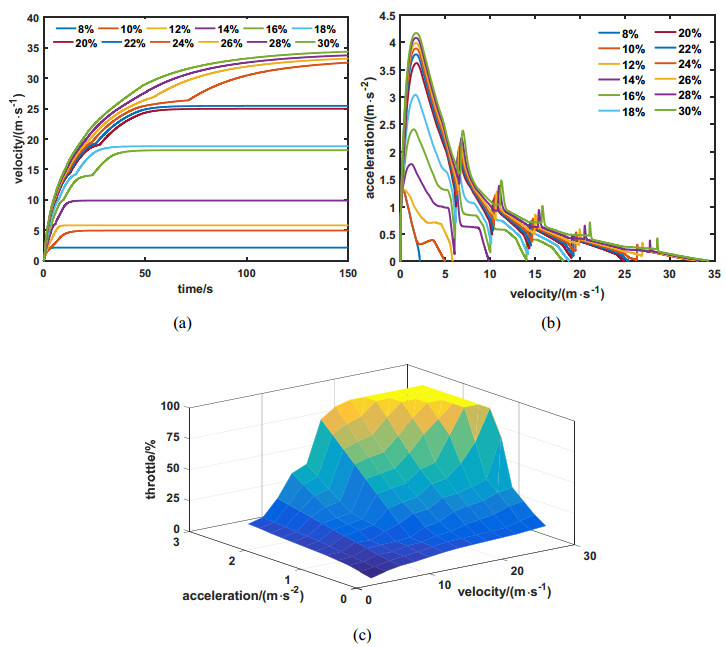
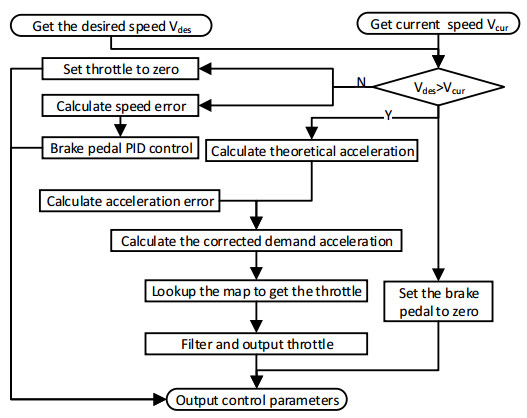


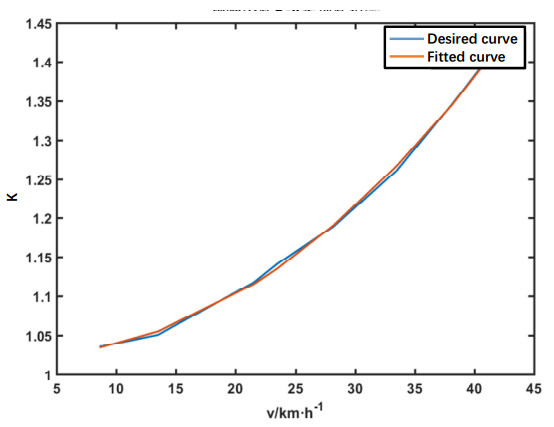
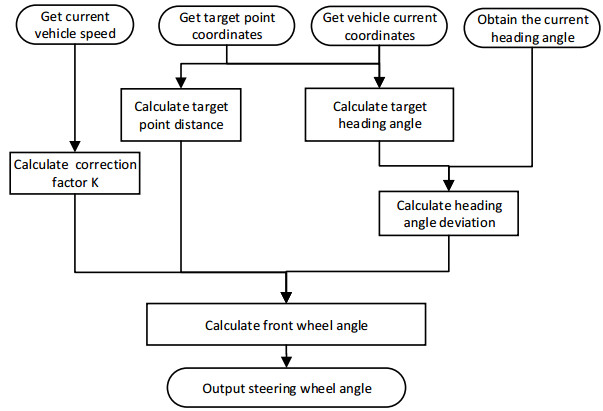





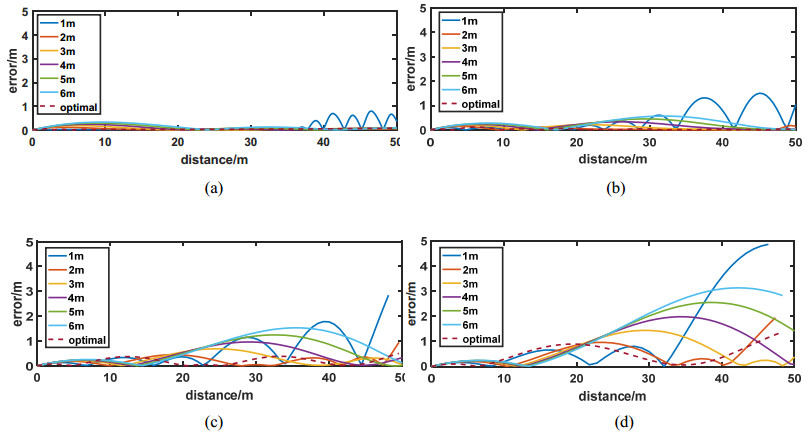
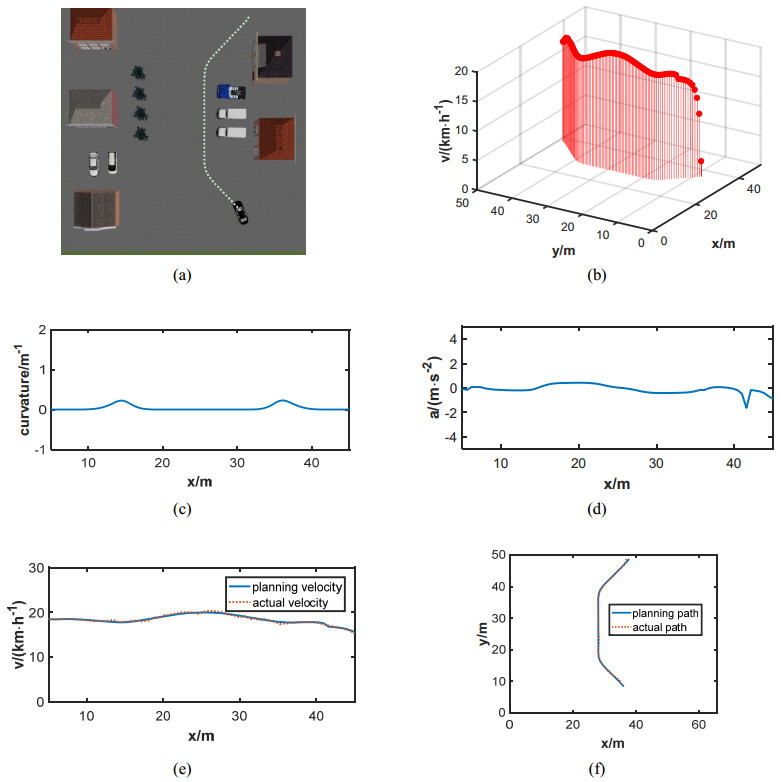
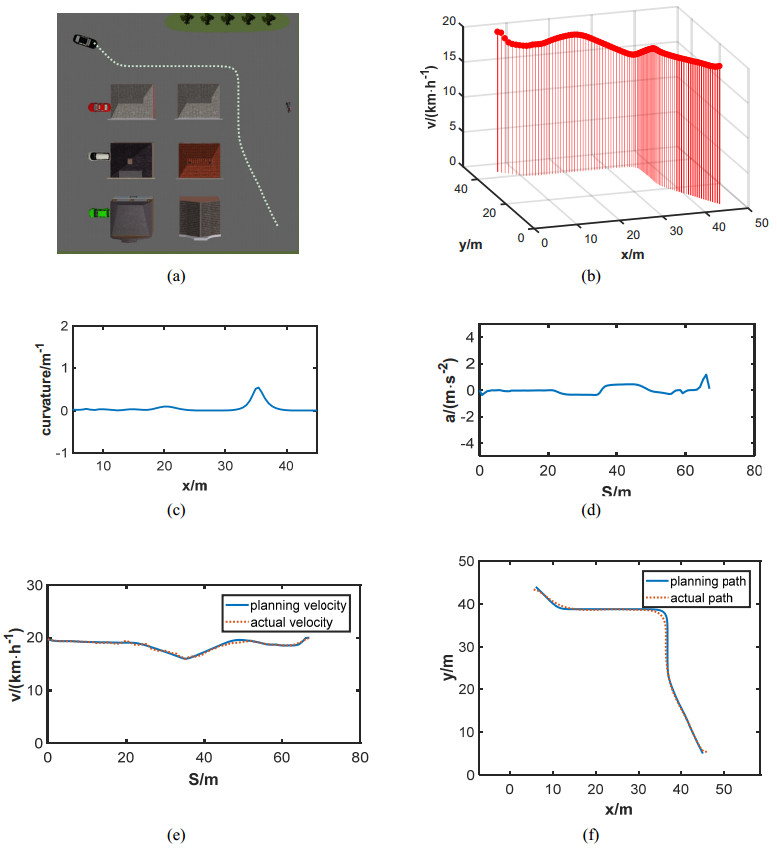


 DownLoad:
DownLoad: